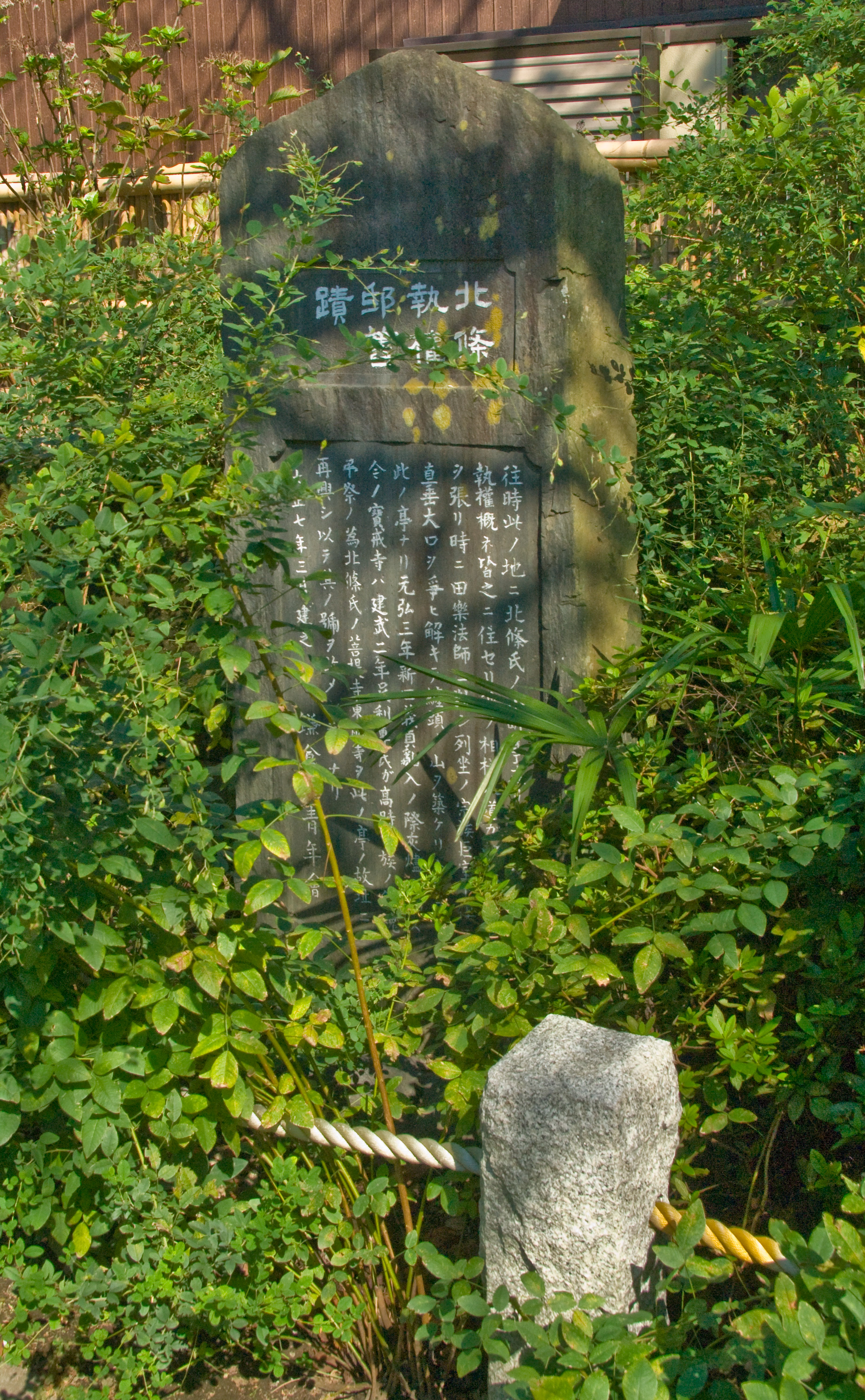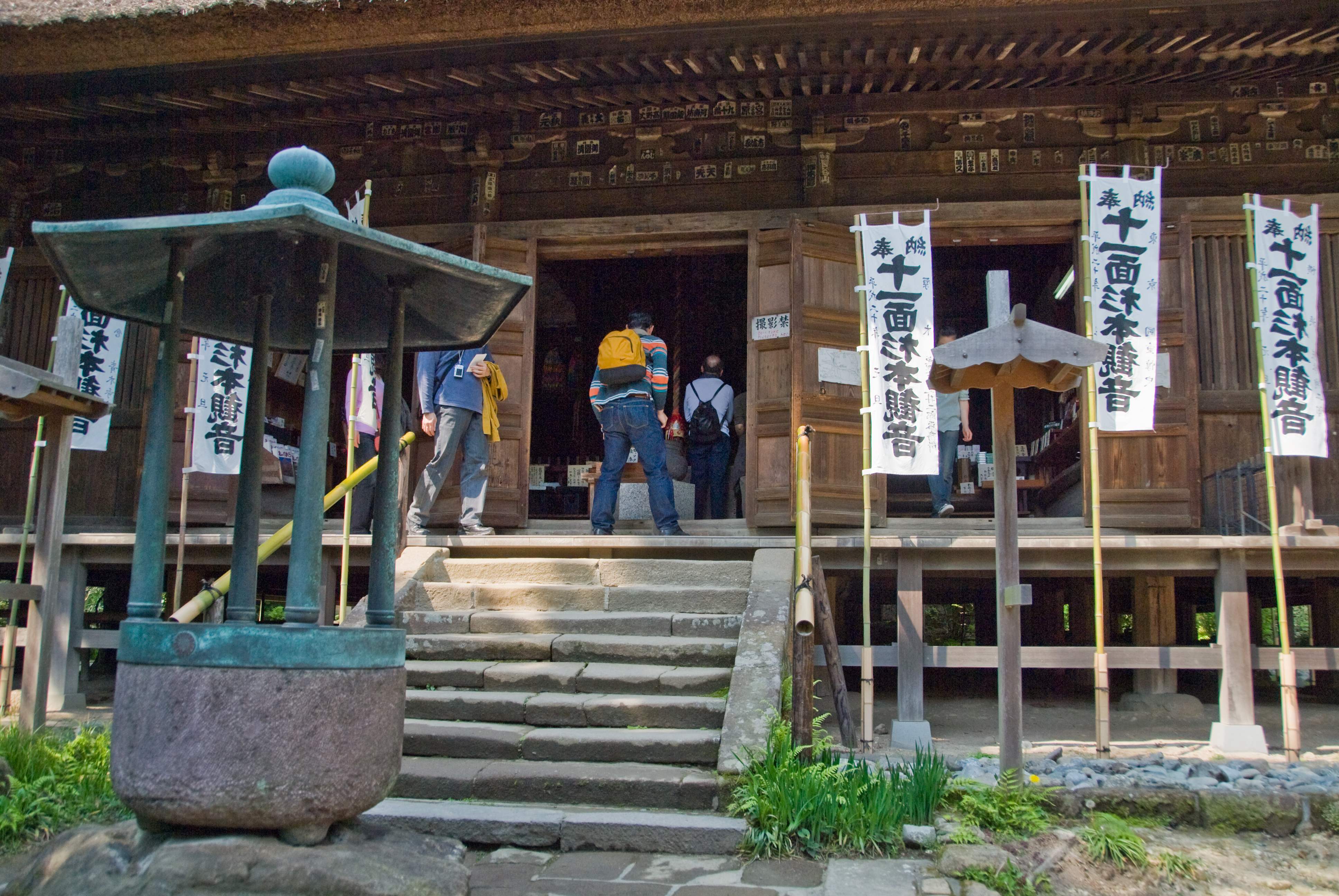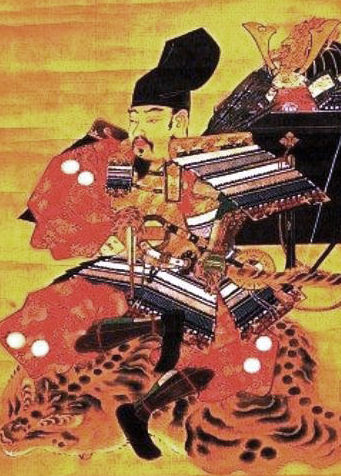|
Hōkai-ji
is a Buddhist temple in Kamakura, Kanagawa Prefecture, Japan. Often called , or "bush-clover temple", because those flowers are numerous in its garden, its existence is directly linked to a famous tragedy that on July 4, 1333 wiped out almost the entire Hōjō clan, ruler of Japan for 135 years. The temple was founded expressly to enshrine the souls of the 870 members (men, women and children) of the clan who, in accordance with the samurai code of honor, committed suicide on that day at their family temple (''bodaiji'') of Tōshō-ji to escape defeat.Shirai (261:1976) Together with ancient Sugimoto-dera, Hōkai-ji is the only temple of the Tendai denomination in Kamakura. Formerly a of the great Kan'ei-ji (one of the two Tokugawa family temples), after its destruction it became a branch of Enryaku-ji. History The temple of Tōshō-ji was built in 1237 by Hōjō Yasutoki in memory of his mother and, according to the ''Taiheiki'', from its foundation until the end of the Kamakur ... [...More Info...] [...Related Items...] OR: [Wikipedia] [Google] [Baidu] |
Sugimoto-dera
is a Buddhist temple in Kamakura, Kanagawa Prefecture, Japan, one of the oldest temples in Kamakura and, together with Hōkai-ji, the only one of the Tendai denomination.Kamiya Vol. 1 (2008:75) The temple is Number one of the Bandō Sanjūsankasho pilgrimage circuit. Two of the three statues of goddess Kannon it enshrines are Important Cultural Properties. Sugimotodera is nicknamed ''Geba Kannon'' ("Dismount Kannon"), because horsemen never failed to dismount from their steeds when they passed by. (According to a different version of the legend, non-believers always fell from their horse when passing in front of the temple.) The temple is a of Hōkai-ji. History According to the temple's own records, Sugimoto-dera was founded in 734 by the minister of the Imperial Court Fujiwara no Fusasaki (681 – 737) and priest Gyōki on orders by Emperor Shōmu. The temple's legend holds that Empress Komyo (701–760) in the Nara Period (710–794) instructed Fujiwara and Gyoki ... [...More Info...] [...Related Items...] OR: [Wikipedia] [Google] [Baidu] |
Tōshō-ji
was the Hōjō clan's family temple ('' bodaiji'') in Kamakura during the Kamakura period. Its founder was Taikō Gyōyū and it was constructed in 1237 by Hōjō Yasutoki in memory of his mother, who had her tomb there. According to the Taiheiki, from its foundation until the end of the Kamakura shogunate every regent (''shikken'') was buried there. The temple no longer exists, since it was set on fire by the Hōjō themselves when the entire family committed suicide after Nitta Yoshisada's invasion of Kamakura on July 4, 1333. Its ruins were found in the Kasaigayatsu valley in today's Ōmachi.Kamiya Vol. 1 (2006/08: 53- 55) Tōshō-ji very probably used to occupy the entire valley. Standing at the top of a narrow valley shut off at its base by the Nameri river's deep gorge and by steep hills on the other three sides, and besides offering a clear view of the only road that crossed the river, it was a fortress surely valuable to the family also from the military point of view. ... [...More Info...] [...Related Items...] OR: [Wikipedia] [Google] [Baidu] |
Bodaiji
A in Japanese Buddhism is a temple which, generation after generation, takes care of a family's dead, giving them burial and performing ceremonies in their soul's favor.Iwanami kojien The name is derived from the term , which originally meant just Buddhist enlightenment (satori), but which in Japan has also come to mean either the care of one's dead to ensure their welfare after death or happiness in the beyond itself. Several samurai families including the Tokugawa had their ''bodaiji'' built to order, while others followed the example of commoners and simply adopted an existing temple as family temple. Families may have more than one ''bodaiji''. The Tokugawa clan, for example, had two, while the Ashikaga clan had several, both in the Kantō and the Kansai areas. Some famous ''bodaiji'' *The Hōjō clan's Tōshō-ji in Kamakura (Kamakura period) (destroyed in 1333) *The Hōjō clan's Hōkai-ji in Kamakura (Muromachi period) *The Ashikaga's Tōji-in in Kyoto (Muromachi perio ... [...More Info...] [...Related Items...] OR: [Wikipedia] [Google] [Baidu] |
Kamakura, Kanagawa
is a city in Kanagawa Prefecture, Japan. Kamakura has an estimated population of 172,929 (1 September 2020) and a population density of 4,359 persons per km² over the total area of . Kamakura was designated as a city on 3 November 1939. Kamakura was the ''de facto'' capital of Japan from 1185 to 1333 as the seat of the Kamakura Shogunate, and became the nation's most populous settlement during the Kamakura period. Kamakura is a popular domestic tourist destination in Japan as a coastal city with a high number of seasonal festivals, as well as ancient Buddhist and Shinto shrines and temples. Geography Surrounded to the north, east, and west by hills and to the south by the open water of Sagami Bay, Kamakura is a natural fortress. Before the construction of several tunnels and modern roads that now connect it to Fujisawa, Ofuna ( ja) and Zushi, on land it could be entered only through narrow artificial passes, among which the seven most important were called , a name so ... [...More Info...] [...Related Items...] OR: [Wikipedia] [Google] [Baidu] |
Main Hall (Japanese Buddhism)
Main hall is the building within a Japanese Buddhist temple compound ('' garan'') which enshrines the main object of veneration.Kōjien Japanese dictionary Because the various denominations deliberately use different terms, this single English term translates several Japanese words, among them ''butsuden'', ''butsu-dō'', ''kondō'', ''konpon-chūdō'', and ''hondō''. ''Hondō'' is its exact Japanese equivalent, while the others are more specialized words used by particular sects or for edifices having a particular structure. Kondō (Asuka and Nara periods) The term started to be used during the Asuka and Nara periods. A ''kondō'' is the centerpiece of an ancient Buddhist temple's ''garan'' in Japan. The origin of the name is uncertain, but it may derive from the perceived preciousness of its content, or from the fact that the interior was lined with gold. This is the name used by the oldest temples in the country.Iwanami Nihonshi Jiten A ''kondō'', for example Hōryū-ji' ... [...More Info...] [...Related Items...] OR: [Wikipedia] [Google] [Baidu] |
Stele Houkai-ji Kamakura
A stele ( ),Anglicized plural steles ( ); Greek plural stelai ( ), from Greek , ''stēlē''. The Greek plural is written , ''stēlai'', but this is only rarely encountered in English. or occasionally stela (plural ''stelas'' or ''stelæ''), when derived from Latin, is a stone or wooden slab, generally taller than it is wide, erected in the ancient world as a monument. The surface of the stele often has text, ornamentation, or both. These may be inscribed, carved in relief, or painted. Stelae were created for many reasons. Grave stelae were used for funerary or commemorative purposes. Stelae as slabs of stone would also be used as ancient Greek and Roman government notices or as boundary markers to mark borders or property lines. Stelae were occasionally erected as memorials to battles. For example, along with other memorials, there are more than half-a-dozen steles erected on the battlefield of Waterloo at the locations of notable actions by participants in battle. A traditio ... [...More Info...] [...Related Items...] OR: [Wikipedia] [Google] [Baidu] |
Shikken
The was a titular post held by a member of the Hōjō clan, officially a regent of the shogunate, from 1199 to 1333, during the Kamakura period, and so he was head of the ''bakufu'' (shogunate). It was part of the era referred to as . During roughly the first half of that period, the ''shikken'' was the ''de facto'' military dictator of Japan (not including the independent Northern Fujiwara). The title of ''shikken'' was modified, as second in command to the '' Tokusō'' in 1256, but by the Muromachi period (1333–1573) the position, though not abolished, did not even figure in the top ranks. The position ceased to exist after the Muromachi period. Etymology The word ''shikken'' is the on'yomi reading of the combination of the two kanji characters and , each meaning "to hold (something in the hand, or a service or ceremony); to administer", "power, authority" respectively. Therefore the word literally means "to hold power/authority". ''Shikken'' as supreme ruler (1199–1256) ... [...More Info...] [...Related Items...] OR: [Wikipedia] [Google] [Baidu] |
Nitta Yoshisada
was a samurai lord of the Nanboku-chō period Japan. He was the head of the Nitta clan in the early fourteenth century, and supported the Southern Court of Emperor Go-Daigo in the Nanboku-chō period. He famously marched on Kamakura, besieging and capturing it from the Hōjō clan in 1333. Later he fought the Takauji brothers on the Emperor's behalf in a see-saw campaign which saw the capital change hands several times. After a peaceful compromise was agreed, Yoshisada was entrusted with two royal princes. At the siege of Kanegasaki (1337), both princes were killed, along with Yoshisada's son, although Yoshisada was able to escape. He committed seppuku when his horse was killed at the siege of Kuromaru. Early life Yoshisada was born in 1301, the eldest son of Nitta Tomouji. He succeeded his father and became the lord of Nitta Manor in Kōzuke Province in 1317. At this time, he also became the head of the Nitta clan. Yoshisada courted a daughter of a court noble, Kōtō-N ... [...More Info...] [...Related Items...] OR: [Wikipedia] [Google] [Baidu] |
Shōgun
, officially , was the title of the military dictators of Japan during most of the period spanning from 1185 to 1868. Nominally appointed by the Emperor, shoguns were usually the de facto rulers of the country, though during part of the Kamakura period, shoguns were themselves figureheads, with real power in hands of the Shikken of the Hōjō clan. The office of shogun was in practice hereditary, though over the course of the history of Japan several different clans held the position. The title was originally held by military commanders during Heian period in the eighth and ninth centuries. When Minamoto no Yoritomo gained political ascendency over Japan in 1185, the title was revived to regularize his position, making him the first shogun in the usually understood sense. The shogun's officials were collectively referred to as the ; they were the ones who carried out the actual duties of administration, while the Imperial court retained only nominal authority.Beasley, William ... [...More Info...] [...Related Items...] OR: [Wikipedia] [Google] [Baidu] |
Ashikaga Clan
The was a prominent Japanese samurai clan which established the Muromachi shogunate and ruled Japan from roughly 1333 to 1573. The Ashikaga were descended from a branch of the Minamoto clan, deriving originally from the town of Ashikaga in Shimotsuke Province (modern-day Tochigi Prefecture). For about a century the clan was divided in two rival branches, the Kantō Ashikaga, who ruled from Kamakura, and the Kyōto Ashikaga, rulers of Japan. The rivalry ended with the defeat of the first in 1439. The clan had many notable branch clans, including the Hosokawa, Imagawa, Hatakeyama (after 1205), Kira , Shiba, and Hachisuka clans. After the head family of the Minamoto clan died out during the early Kamakura period, the Ashikaga came to style themselves as the head of the Minamoto, co-opting the prestige which came with that name. Another Ashikaga clan, not related by blood, and derived instead from the Fujiwara clan, also existed. History Emperor Go-Daigo 後醍� ... [...More Info...] [...Related Items...] OR: [Wikipedia] [Google] [Baidu] |
Taiheiki
The (Chronicle of Great Peace) is a Japanese historical epic (see '' gunki monogatari'') written in the late 14th century and covers the period from 1319 to 1367. Nussbaum, Louis-Frédéric. (2005)"''Taiheiki''"in ''Japan Encyclopedia'', pp. 923–924. It deals primarily with the Nanboku-chō, the period of war between the Northern Court of Ashikaga Takauji in Kyoto, and the Southern Court of Emperor Go-Daigo in Yoshino. Original work The latest English translation consists of 12 chapters of the 40-chapter epic, and spans the period from Go-Daigo's accession in 1318 (when Takauji was still a minor vassal of the Kamakura shogunate's Hōjō clan), through Takauji's betrayal of the Hōjō, and Go-Daigo's fall and expulsion by Takauji in 1333, to his return to Kyoto in 1338. Go-Daigo, unlike many of the emperors before him, sought to supersede the power of the ''shōguns'', and to actually rule in addition to reigning in name. Thus began a series of battles, both military and pol ... [...More Info...] [...Related Items...] OR: [Wikipedia] [Google] [Baidu] |
Komachi (Kanagawa)
is a locality (a ) in Kamakura, Kanagawa prefecture is a prefecture of Japan located in the Kantō region of Honshu. Kanagawa Prefecture is the second-most populous prefecture of Japan at 9,221,129 (1 April 2022) and third-densest at . Its geographic area of makes it fifth-smallest. Kana ..., Japan, defined as the part of town north of the Ebisubashi bridge on the Namerigawa.Kamakura Shōkō Kaigijo (2008:60-61) The part of town south of the same bridge is called . Notes References * Kamakura, Kanagawa {{kanagawa-geo-stub ... [...More Info...] [...Related Items...] OR: [Wikipedia] [Google] [Baidu] |









